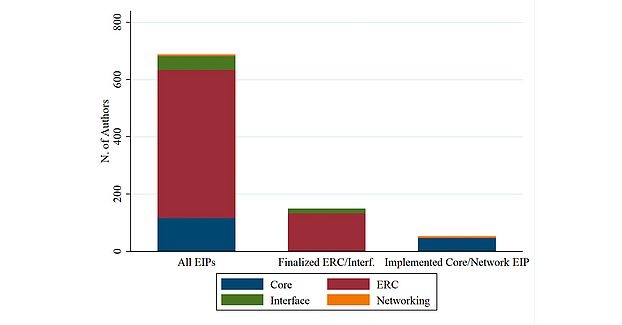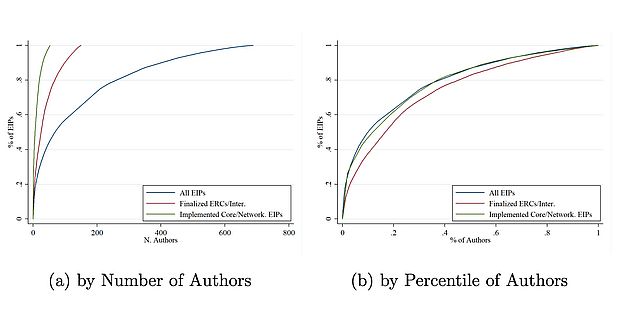/ News, Research, Publication, Blockchain, Journal Article
Decentralized Crypto Governance? Transparency and Concentration in Ethereum Decision-Making
Publication by Cesare Fracassi, Moazzam Khoja, and Fabian Schär
The regulatory treatment of cryptoassets depends primarily on three main governance characteristics: transparency, decentralized decision-making, and the effect of governance on token prices. We offer the first comprehensive analysis of the decision-making process of Ethereum, the leading programmable blockchain. We find that its governance is open and transparent, with all Ethereum Improvement Proposals (EIPs) disclosed and discussed in public venues, engaging thousands of people. At the same time, EIPs are predominantly shaped by a core group of influential authors: 10 individuals are responsible for proposing 68% of all implemented Core EIPs. The success of these proposals is significantly associated with key attributes of the proposers, including their social outreach, community engagement, and company affiliation. Furthermore, we observe a notable concentration in client development, where on average 10 people per client implementation are responsible for 80% of all software changes, and identify stablecoin issuers and oracle providers as potential governance centralization vectors. The governance concentration has been slowly decreasing over time, with the Ethereum Foundation still playing an important role. Finally, we find that governance decisions influence crypto prices: Ether price increases 12% leading to the final discussion of Core EIPs.



